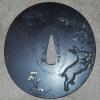
Peter Bleed
-
Posts
1,827 -
Joined
-
Last visited
-
Days Won
8

Peter Bleed replied to 400 year old katana needs restorati's topic in Nihonto
Will this work??
Jeremiah,
I can't figure out how to sent you or the list the Kunikane Excel sheet? Please advise!
Peter
Peter Bleed replied to a topic in General Nihonto Related Discussion
Peter Bleed replied to Peter Bleed's topic in Assorted Samurai, Japanese Art and Related Items
Peter Bleed replied to Spartancrest's topic in Tanegashima / Teppo / Hinawajū
Peter Bleed replied to Infinite_Wisdumb's topic in Wanted to Buy
Peter Bleed replied to Peter Bleed's topic in Military Swords of Japan

